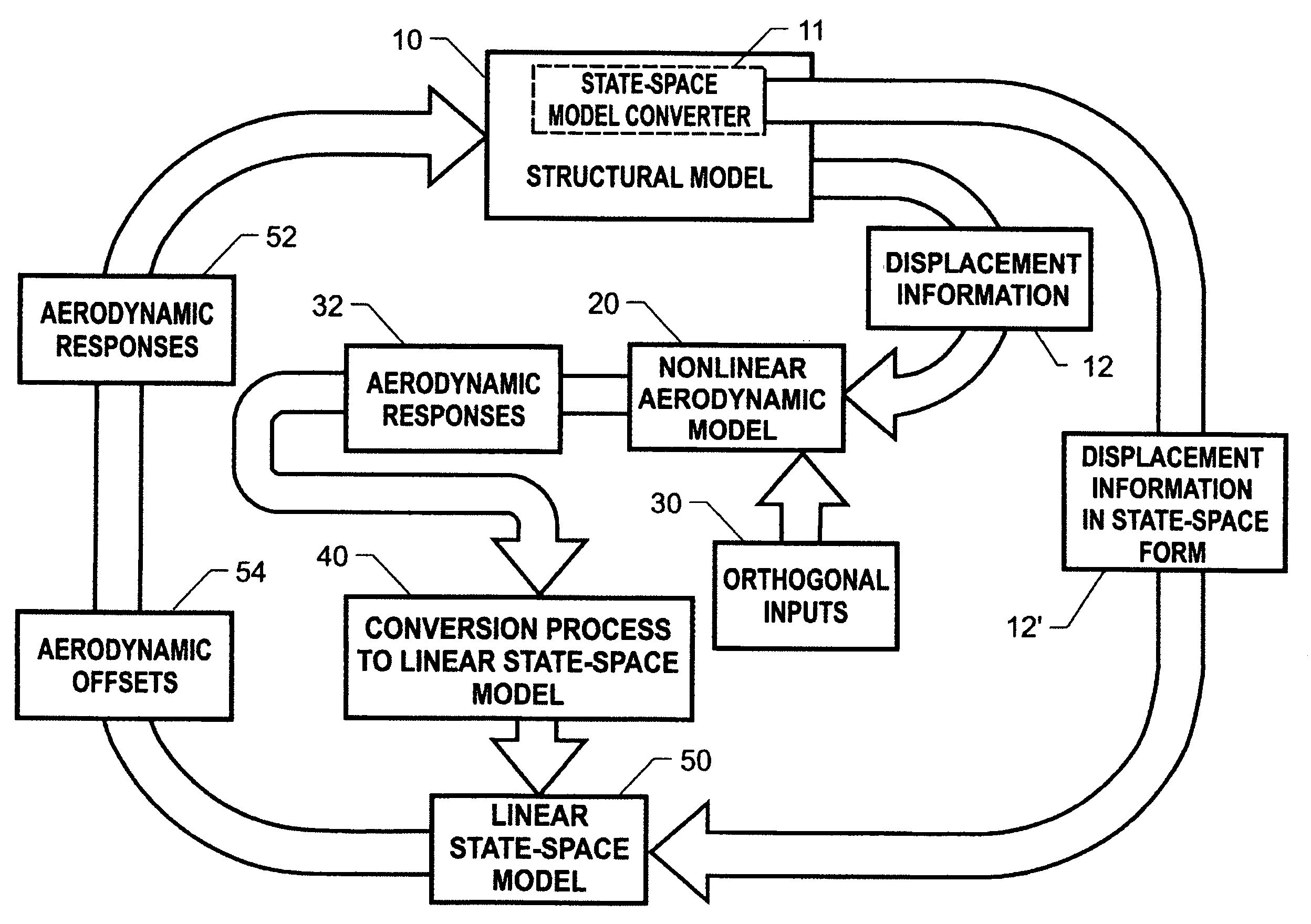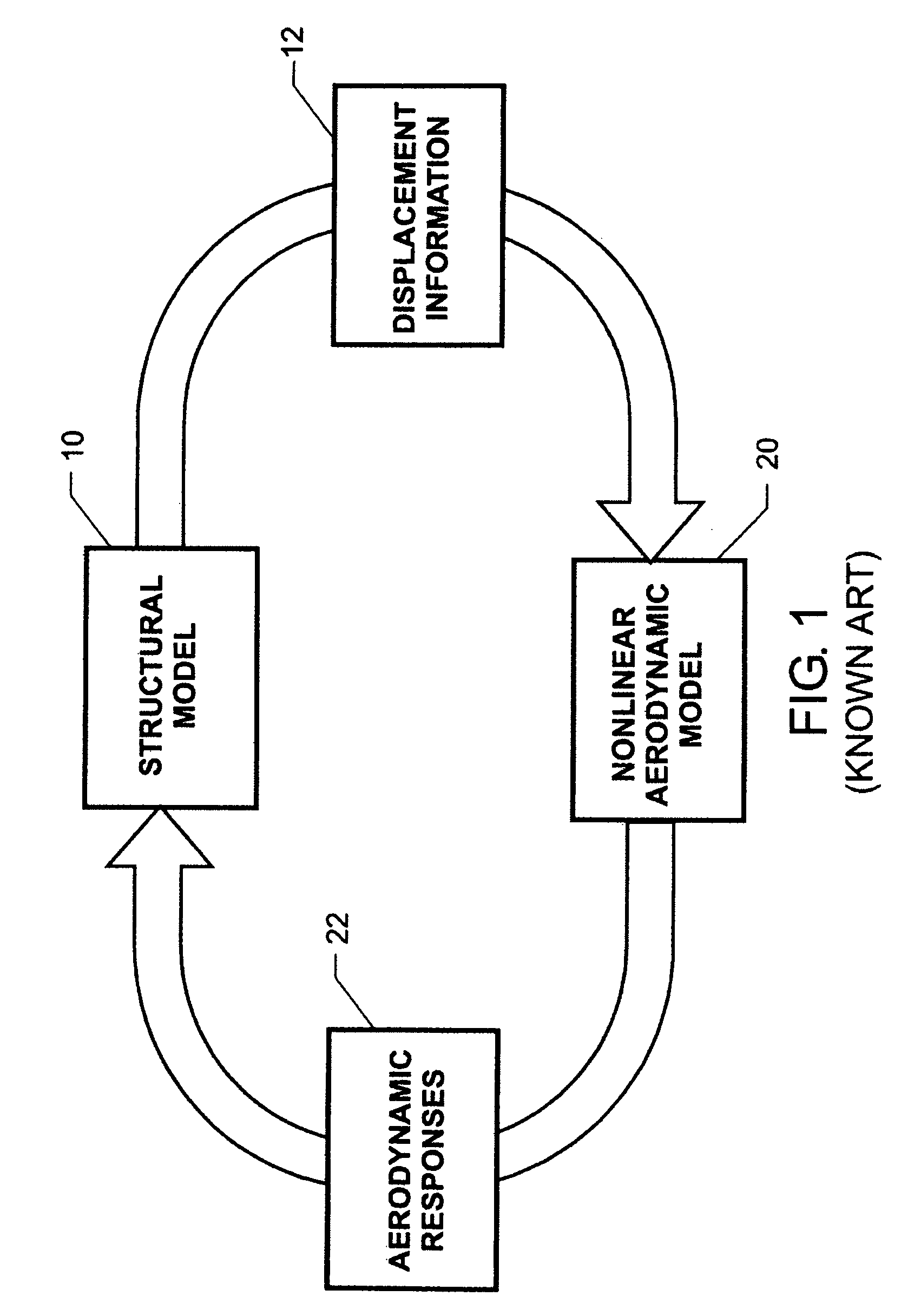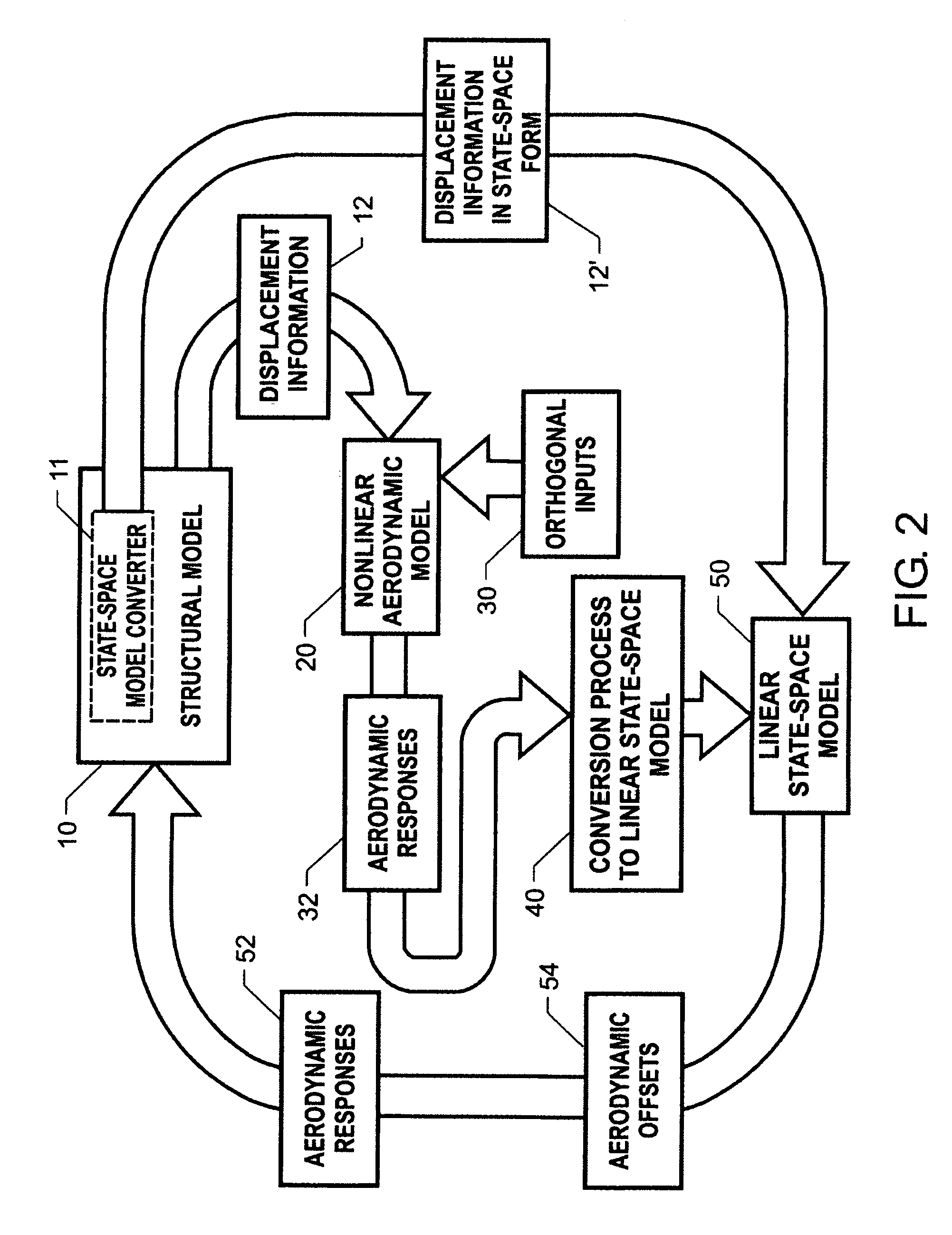Method of Performing Computational Aeroelastic Analyses
a computational aeroelastic and analysis method technology, applied in adaptive control, process and machine control, instruments, etc., can solve the problems of large computational cost, time-consuming and computationally expensive traditional computational aeroelastic analysis, and reduce the amount of time it takes
- Summary
- Abstract
- Description
- Claims
- Application Information
AI Technical Summary
Benefits of technology
Problems solved by technology
Method used
Image
Examples
Embodiment Construction
[0021]Referring again to the drawings and more particularly to FIG. 2, a method of performing computational aeroelastic analyses in accordance with an embodiment of the present invention is illustrated graphically. The attributes of this novel method that are the same as the traditional method (FIG. 1) will be referred to using common reference numerals. This new method can be applied to any flexible structure that can be modeled in terms of its various structural modes or displacement characteristics. For example, the present invention can be used to perform computational aeroelastic analyses on a variety of flexible aerodynamic structures such as wings, fuselages, and tail components.
[0022]Similar to traditional computational aeroelastic analyses methods, the present invention uses a structural model 10 that is a mathematical model describing the various structural modes for a flexible structure of interest. More specifically, structural model 10 provides an aeroelastic model that...
PUM
 Login to View More
Login to View More Abstract
Description
Claims
Application Information
 Login to View More
Login to View More - R&D
- Intellectual Property
- Life Sciences
- Materials
- Tech Scout
- Unparalleled Data Quality
- Higher Quality Content
- 60% Fewer Hallucinations
Browse by: Latest US Patents, China's latest patents, Technical Efficacy Thesaurus, Application Domain, Technology Topic, Popular Technical Reports.
© 2025 PatSnap. All rights reserved.Legal|Privacy policy|Modern Slavery Act Transparency Statement|Sitemap|About US| Contact US: help@patsnap.com



